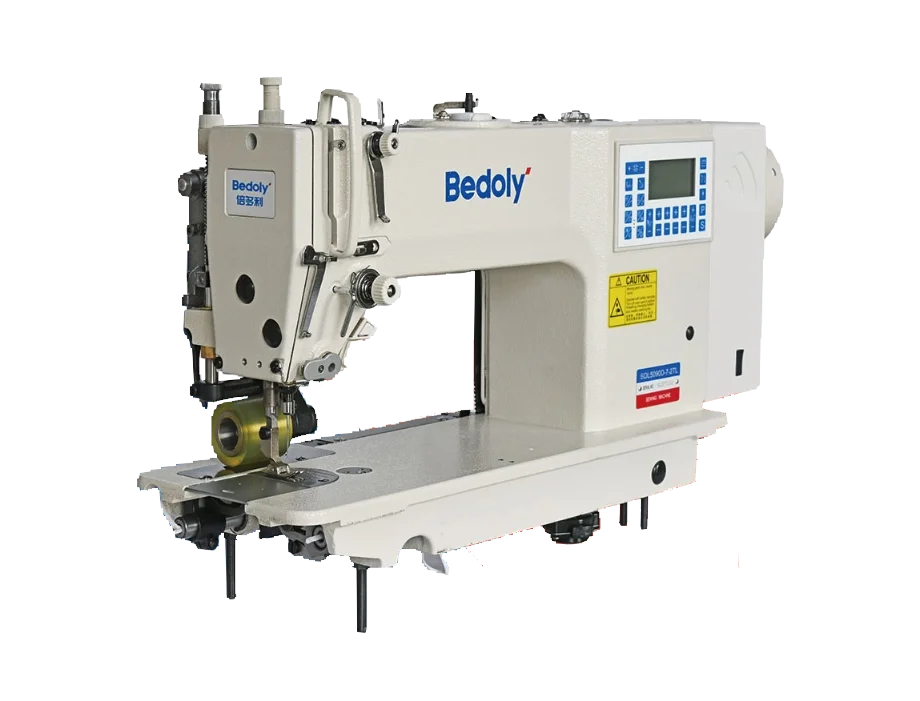- This topic is empty.
-
AuthorPosts
-
2025-09-22 at 5:20 pm #86641
In today’s fast-paced textile and garment industries, precision, efficiency, and consistency are paramount. Whether you're manufacturing high-fashion apparel, automotive upholstery, or home furnishings, computerized lockstitch machines have become an essential tool for modern sewing operations. These technologically advanced machines have transformed how we approach stitching—offering speed, smart control, and superior seam quality.
In this article, we’ll explore the common uses of computerized lockstitch machines across different industries and highlight how Sanhexin, a professional manufacturer specializing in the R&D, production, and manufacturing of sewing machines, is helping customers embrace innovation in sewing technology.
What Is a Computerized Lockstitch Machine?
A lockstitch machine creates stitches using two threads: one from the needle and one from the bobbin. The result is a tight, durable seam that looks the same on both sides of the fabric. A computerized lockstitch machine enhances this classic mechanism with digital control features, allowing users to automate functions such as:
Stitch length and speed adjustment
Backtacking and bar-tacking
Thread trimming
Needle positioning
Pattern programming
These features not only increase productivity but also reduce operator fatigue and material waste.

Common Uses of Computerized Lockstitch Machines
1. Garment Manufacturing
Lockstitch machines are the backbone of clothing production—from T-shirts to tailored suits. Computerized models allow garment factories to handle:
Straight seams on shirts, pants, and dresses
Topstitching for decorative or structural purposes
Sewing of lightweight to medium-weight fabrics (e.g., cotton, polyester, blends)
With advanced stitch control, computerized lockstitch machines ensure uniformity in high-volume production and adaptability for custom-designed garments.
2. Home Textiles
Items like curtains, bed linens, cushion covers, and tablecloths require strong, neat, and sometimes decorative seams. Computerized lockstitch machines can be programmed to:
Sew long straight lines quickly and accurately
Create repeatable decorative stitch patterns
Handle delicate materials like lace or sheer fabric with precision
Sanhexin’s machines are designed to support diverse textile applications with high stitch quality and ease of operation.
3. Upholstery and Furniture
In the furniture and automotive industries, lockstitch machines are used to stitch fabric, leather, or vinyl upholstery. Computerized control enables:
Reinforced seams for durability
Precise needle penetration on thick or padded materials
Pattern consistency across multiple units
Whether you're sewing sofa cushions, office chairs, or car interiors, computerized lockstitch machines offer the strength and versatility needed.
4. Leather Goods and Accessories
Handbags, belts, wallets, and even footwear benefit from the tight, secure stitch of a lockstitch machine. With programmable stitch control, manufacturers can:
Create consistent seams on leather or synthetic materials
Integrate decorative stitching for branding
Automate repetitive patterns
Sanhexin offers models with reinforced feeding systems and durable components specifically for heavy-duty applications like leatherwork.
5. Industrial and Technical Textiles
Industries that produce safety gear, tents, tarpaulins, or uniforms require stitching that can withstand wear, stress, and environmental conditions. Computerized lockstitch machines support the production of:
Flame-retardant clothing
Protective equipment
Outdoor covers and gear
Their ability to handle specialized threads and program functional stitch types makes them ideal for industrial textiles.

Benefits of Using Computerized Lockstitch Machines
Precision and Consistency
Digital controls allow operators to replicate the exact same stitch settings across thousands of pieces—perfect for brands that demand uniform quality.
Higher Productivity
Automatic thread cutting, backtacking, and speed adjustment help reduce manual intervention, speeding up the production line.
User-Friendly Interface
Modern machines come with intuitive digital displays that make it easy to switch between settings, store stitch patterns, or monitor performance.
Versatility Across Materials
From chiffon to canvas, computerized lockstitch machines adjust easily to different fabric types—making them suitable for varied production lines.
Lower Operator Fatigue
With many repetitive actions automated, operators can focus on precision without the physical strain of manual sewing tasks.

Why Choose Sanhexin Sewing Machines?
Sanhexin is a leading sewing machine manufacturer committed to developing innovative, high-performance machinery for the textile and garment industries. As a professional company specializing in R&D, production, and manufacturing, Sanhexin brings together modern engineering with deep industry expertise to deliver sewing solutions that match the demands of today’s manufacturers.
Sanhexin’s Advantages:
Cutting-edge computerized sewing systems
Durable components for long-lasting performance
Tailored models for garment, upholstery, and industrial applications
Responsive customer service and technical support
Continuous innovation through dedicated R&D teams
Whether you're scaling up your apparel production or upgrading your upholstery line, Sanhexin provides the reliable, efficient, and intelligent sewing machines you need to stay competitive.

Conclusion
From fashion factories to furniture workshops, computerized lockstitch machines have revolutionized the way we approach precision sewing. Their flexibility, automation, and consistency make them indispensable tools across multiple industries.
Sanhexin, with its commitment to quality and innovation, is leading the way in delivering state-of-the-art sewing equipment that meets the evolving needs of manufacturers worldwide.
Applications of Computerized Bottom Feed Lockstitch Machines in Garment Production
http://www.bedoly.net
Ningbo Sanhexin Automation Co., Ltd. -
AuthorPosts
- You must be logged in to reply to this topic.